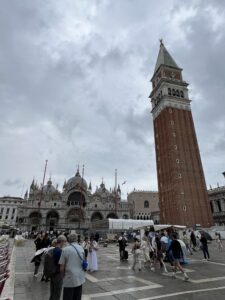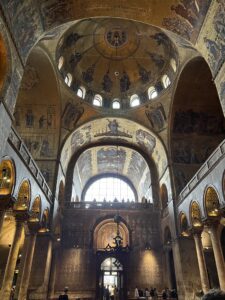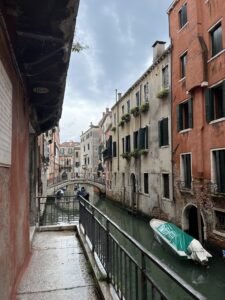One of my favorite day trip visits we did as a class was our adventure to Venice. Although it was a little rainy in Venice that day, I thoroughly enjoyed learning about and exploring the unique city. An overarching theme I found interesting about Venice and its people was how adaptable they were. In 421 AD, in an effort to escape the dangers following the fall of Rome on the Italian mainland, the people fled to what we now call Venice. This area acted as a natural defense from the barbarian raids because it was made up of nothing but swamp, lagoons, and over 100 muddy islands that the barbarians had no interest in chasing the people out to. Although this was good for protection, the Venetians still had to figure out a way to survive on it since there was no fresh water and no land to grow crops. Due to their location on the coast, they were able to access the forests where they would get the wood to build up their community, also leveraging trade for food and other supplies. Through constant innovation and out-of-the-box thinking, the Venetians were not only able to survive but they became a dominant power in the world of trade which allowed them to accumulate mass wealth. I loved walking over the Rialto Bridge, knowing it was Venice’s biggest symbol of trade since it crossed the Grand Canal where many came to do business. It was also fascinating to recognize characteristics of wealth in St. Mark’s Square which was surrounded by stunning and intricate architecture. St. Mark’s Basilica held even more of this wealth as 8,000 square meters of it is covered in gold mosaics. As I reminisce on this experience, I’m reminded of how important the role of adaptability played in the rise of Venice as a global leader. I will forever be in awe of the history and beauty of this city and am glad I can take this lesson with me through the rest of my life.




